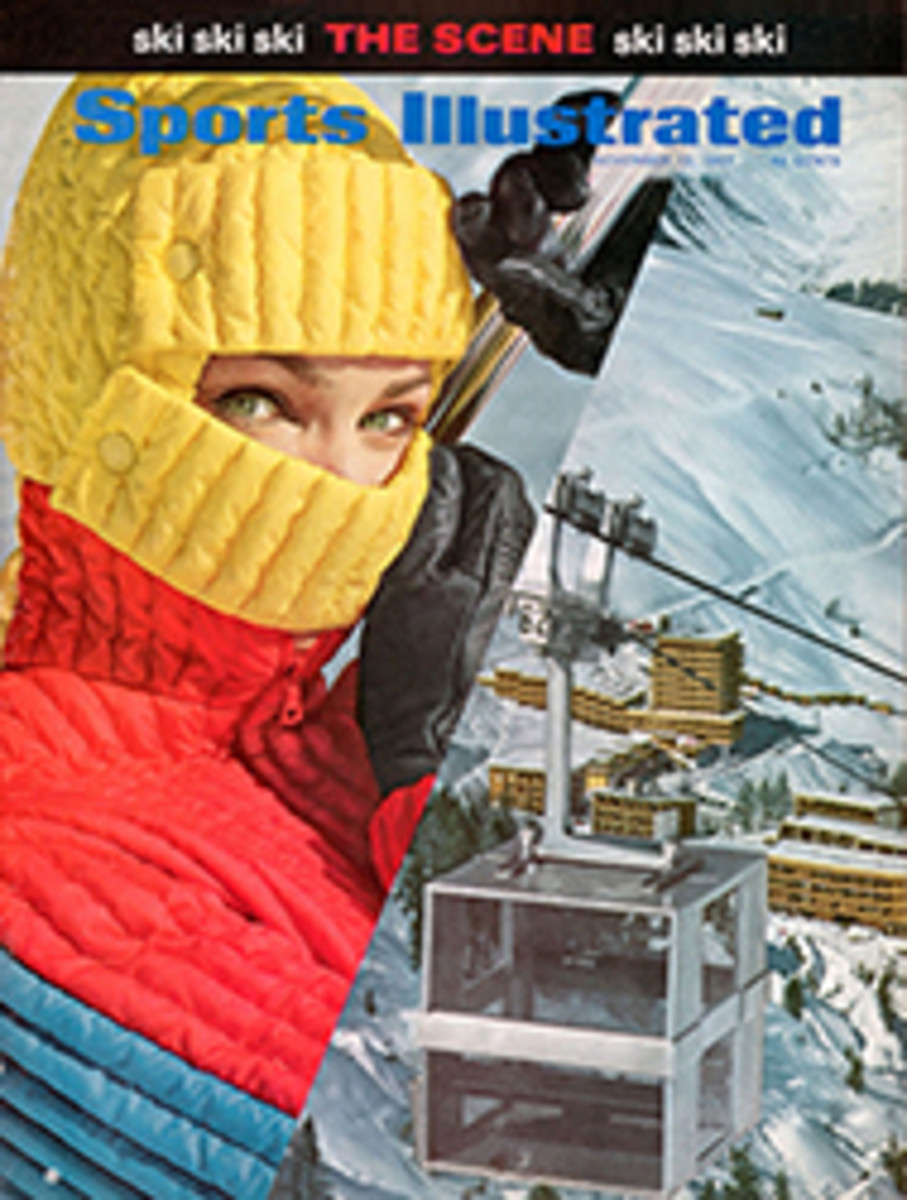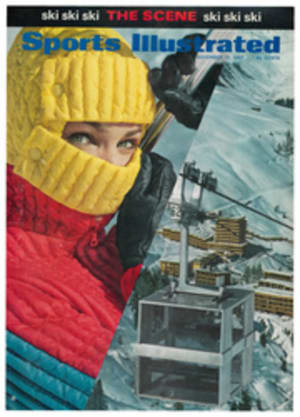
A big raid that really paid off
Ten minutes before it was Oakland's turn to select in the first round of last winter's professional football draft, Al Davis finally picked up the telephone and said, "O.K. It's a deal." For months Davis—formerly Oakland's coach and general manager, then commissioner of the AFL during a short but bitter phase of the war with the NFL, now managing partner of the Raiders—had been haggling with Buffalo over the Bills' substitute quarterback, Daryle Lamonica, but the price, as Davis saw it, was very high. However, the better college quarterbacks had already vanished among the 16 clubs that picked ahead of Oakland, and the Raiders were determined to choose an offensive guard, Gene Upshaw, in the first round. So Davis conferred again with his coach, John Rauch, who was strongly in favor of the trade, and the fait was accompli. Oakland got Lamonica and Receiver Glenn Bass. Buffalo got Tom Flores, who had been Oakland's No. 1 quarterback, and the superb receiver, Art Powell. There was some juggling of draft choices by the teams, too. Then the rest of the AFL sat back to see which club had been shrewdest. The early favorite was Buffalo.
Last week, as Oakland was demolishing San Diego 51-10, Flores was on the Buffalo bench behind Jack Kemp; Powell was out of action because of a knee injury and Buffalo was wallowing near the bottom of the Eastern Division. Bass was on the Houston roster, having been cut from the Oakland squad during the exhibition season. But Lamonica, the ex-Notre Dame star who had spent four years in relief of Kemp, was among the league's top passers, and the Raiders, with only one defeat, were leading the Western Division.
"We were willing to wait a couple of years on Daryle," said Davis. "We knew it would take time for him to fit into our system. We knew we could play defense and we knew we could run the ball, but it was up to Daryle to get our passing game going. He seems to be doing it sooner than we had expected. Now what we've got to watch out for is not to let ourselves get fatheaded."
The Raiders also had inquired into the possibility of trading for Pete Beathard, who was recently dealt to Houston from Kansas City. But Davis insists Lamonica was the man they wanted all along, provided they could not trade for Joe Namath, which perhaps they could have if Davis had been able to deliver Jack London Square intact from downtown Oakland to Shea Stadium in return. Lamonica was, of course, very pleased with the move.
"Each game I'm getting more confidence," he said. "I feel that I'm becoming a leader. I had to improve in a hurry because I knew they were counting on me. By playing regularly, the game plan is becoming second nature to me. I'm getting to the point where I can see situations on the field and use plays, in special instances, that aren't even in our game plan. Some day I want to finish a game with 100% completions. But the fans don't ask about your statistics. All they ask about is whether you win or lose."
The Raiders have been winning with an offensive line that is an interesting mixture of youngsters (Upshaw, Harry Schuh and Bob Svihus) and eight-year veterans (Jim Otto, Wayne Hawkins and Billy Cannon). Fullback Hewritt Dixon, a converted end, is a tackle breaker and a fine receiver who carries the ball as if it were a cantaloupe. Running Back Clem Daniels is the first rusher in AFL history to gain more than 5,000 yards in his career. The offensive weakness has been with the passing to the outside receivers. Warren Wells, Oakland's fastest and potentially most dangerous receiver, plays behind the well-traveled Bill Miller at split end. But the flanker, Fred Biletnikoff, who used to catch Steve Tensi's passes at Florida State, is gaining a bit more respect on deep routes because he has proved so difficult to cover on the shorter ones. Defensive backs are beginning to crowd him so that occasionally he has been able to fake and turn upfield, as he did for a 70-yard touchdown against San Diego.
For the San Diego game the Raiders filled the city's fine new stadium to its 53,474 capacity—which is quite a change for a team that used to play at a temporary field before fewer people than would ordinarily gather to look at a car wreck—and anybody in the crowd could have told you the main attraction was the Oakland defense. Called the Eleven Angry Men and the Quarterback Killers by affectionate fans, the defense has won hearts in the Bay area primarily because it has the league's best backs, plus coordination, depth and a set of linebackers whose speed is often underestimated by rival coaches. Lovable as these players are, Oakland's mauling of San Diego in the game that many thought was the Western Division's most important in the first half of the season is bound to switch some fan allegiance to the offense.
In the meantime there are the old reliable defenders—in depth. When Right Corner Back Willie Brown was injured he was replaced by Dave Grayson, an All-AFL performer of other years. Grayson intercepted three passes against San Diego and covered Charger Split End Gary Garrison like an overcoat. At the other corner is Ken McCloughan, tough, competitive and fast enough to play his man tight. The safeties are Howie Williams and Rodger Bird, who doubles as one of the AFL's best punt returners. Bird's 78-yard run against San Diego broke open the game. The defensive line is not especially big at tackle, although the ends, Ben Davidson and Ike Lassiter, are 6'7", 265 and 6'5", 270. But Tackles Dan Birdwell and Tom Keating are quick, and the line works slickly as a unit.
It is no surprise that the Raiders have done well this season after two years of finishing second. The surprises in the West are that San Diego has won five and tied one of its first seven games and that Kansas City has been beaten three times. Despite the loss to Oakland, the Chargers have made a strong recovery from a disastrous exhibition schedule that included a 50-7 beating by the Los Angeles Rams on a day when San Diego's corner backs were hurt and Quarterback John Hadl had a grievous lack of time to throw the ball and an equally grievous lack of receivers to catch it. San Diego had several people hurt during the early weeks, and Coach Sid Gillman had not then discovered the running talents of his 5'10", 190-pound rookie, Dick Post. At the University of Houston, Post was used mostly as a power runner between the tackles while his more famous teammate, Warren McVea, got the outside work. Upon reporting to San Diego, Post was placed at flanker to utilize his speed and pass-catching ability. Further injuries to San Diego backs, particularly to Paul Lowe, forced the switching of Post to running back, and he was an immediate sensation. His running style has been compared to that of a good flanker who has caught the ball in an open field. The San Diego offensive line has had an effective year, but the blocking of pulling Guard Walt Sweeney, Tight End Willie Frazier and Fullback Brad Hubbert—another rookie—-has received most of the credit for Post's success on sweeps.
In Kansas City's three losses Houston beat the Chiefs with defense, San Diego with offense and Oakland when one of the Chiefs dropped a certain touchdown pass toward the end of the game. There have been the usual rumors of various sorts of discontent among the Chiefs, but Coach Hank Stram denies them. Last year Kansas City had two losses and a tie but won the West easily. This year? Better check the Raiders and the Chargers before betting on a repeat performance.
PHOTO
PUSHED BACK AFTER SCORING AGAINST SAN DIEGO, LAMONICA APPROVES REF'S CALL

